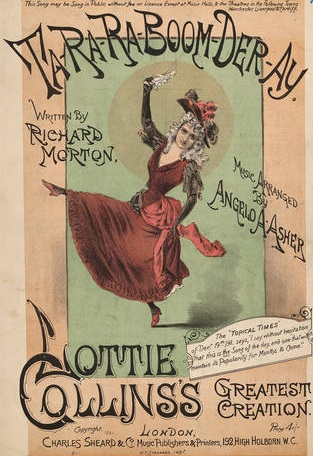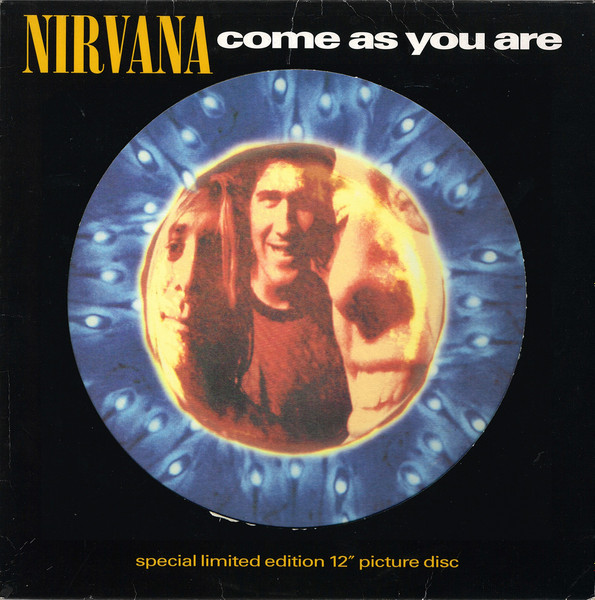About the Album:
As the cover art for Little Earthquakes “evocatively illustrated, [Tori] Amos would never be an artist who could be pigeonholed, stereotyped or walled in in any way. She proudly flaunted the many conflicting sides of her artistic persona, leaving listeners to sort out what it all means.” JD
“With her haunting solo debut…Amos carved the template for the female singer/songwriter movement of the ‘90s.” AMG As both a classically trained pianist and a singer with “the attitude of an alternative rocker,” JD she was “a sometimes spacey, new-age chanteuse with a flair for cynical satire, and a raging punk who could also play the flighty faerie princess.” JD Her “delicate, prog rock piano work and confessional, poetically quirky lyrics invited close emotional connection.” AMG
“Similarly minimalist singer-songwriter, adult-alternative fare” JD from “Tracy Chapman, Melissa Etheridge, Sarah McLachlan, k.d. lang, Sinéad O'Connor, and the Indigo Girls had already begun to reach the same flock, but Amos—by virtue of her sexual intensity and subject matter—instantly commanded a bond only rivaled by Madonna.” PF The “intimacy is uncompromising, intense, and often far from comforting” AMG as “Amos tackles hot-button topics such as gender stereotyping, religious conservatism, male hegemony and rape.” JD Her “musings…were just as likely to encompass rage, sarcasm, and defiant independence as pain or tenderness” AMG and she did so “in a frank, unflinching, and alternately poignant and heartbreakingly funny manner;” JD “sometimes, it all happened in the same song.” AMG
Background:
Myra Ellen Amos “grew up in Baltimore, the outspoken daughter of a Scottish Methodist preacher and a mother who was part Cherokee.” JD She was entranced with music early on, becoming the youngest-ever student – at age 5 – to enroll at Johns Hopkins’ University’s Peabody Institute. By 13, she was performing at piano bars in Washington, D.C. In 1988, her “Pat Benatar-esque” PF “leather-and-metal project called Y Kant Tori Read” (which included future Guns N’ Roses’ drummer Matt Sorum) “instantly flopped.” PF The cover represented her as “a sword-wielding, flame-haired metal vixen.” PF As she said, “I had come from child prodigy to vapid bimbo.” RS
She moved to England in 1990 and, inspired by “heroines ranging from Kate Bush to Patti Smith” JD started writing “confessional, piano-driven tracks exploring the complexities of finding one’s voices and throwing off the shackles of religion.” RS Producer and then-boyfriend Eric Rosse worked with Amos to keep “the sound spare but tuneful, mostly focusing on her fluid piano playing and soaring vocals. Like Leonard Cohen before her, she proved that these two simple sonic elements can pack as powerful a wallop as Nirvana’s crushing guitar, bass and drums.” JD Little Earthquakes, in fact, was released when Nirvana’s Nevermind was atop the charts and, although “it was rarely talked about this way, was similarly radical – an alternately flirty and harrowing work that juxtaposed barbed truths against symphonic flights of fancy.” PF
1990 Demo Tape:
In December 1990, Amos submitted a 10-track demo tape to Atlantic Records. They rejected it, although “Crucify,” “Happy Phantom,” “Leather,” and “Winter” would eventually end up on Little Earthquakes. “Take to the Sky (aka “Russia”), “Mary,” Sweet Dreams,” “Song for Eric,” and “Flying Dutchman” would get released as B-sides on singles in support of Little Earthquakes in 1991 and 1992. That album also included the unreleased song “Learn to Fly.” The video below was assembled by a fan to approximate that 1990 demo tape.
Amos says she was asked to write and record a new track. She said, “No. I’ll do four. I can’t do one because there’s too much pressure for that one to be it.” RS She pulled in Eric Rosse, her then-boyfriend, as a co-producer. She said, “We’re sort of like spiritual brother and sister.” RS They developed the songs “Girl,” “Precious Things,” “Tear in Your Hand,” “Mother,” and “Little Earthquakes,” which would all end up on the Little Earthquakes album. She also recorded “Take Me with You,” which was released in 2006 with re-recorded vocals.
“Me and a Gun”
The eventual Little Earthquakes album was preceded by “the harrowing ‘Me and a Gun,’” AMG a single which set the stage for the unconventional and bold style Amos would apply throughout her career. She opted for a completely a capella performance on “the album’s most striking track, and the one most indicative of the artist's honest-at-all-costs approach.” JD Amos “confronts the listener with the story of her own real-life rape; the free-associative lyrics come off as a heart-wrenching attempt to block out the ordeal.” AMG
“Silent All These Years”
The single for “Me and a Gun” included non-album cuts “Upside Down” and “Thoughts” as well as the album cut “Silent All These Years.” After BBC Radio One in the UK named the latter the “Song of the Week” it was released on its own as a single. She told Rolling Stone that after the failure of Y Kant Tori Read, “I’m only in my twenties and it’s over.” RS However, she was inspired by reading Hans Christian Andersen’s Little Mermaid to her niece. It resonated with Amos that the main character loses her voice and Amos wrote “Silent All These Years” about reclaiming her own voice.
The song was a minor hit, reaching #26 in the UK and only #65 in the U.S., but it would become the song that launched Tori Amos’ career. “Yet even in the singer’s most accessible song, idiosyncrasies abound: From intro to opening verse, the tempo slows drastically, and remains irregular. Her right hand on the piano doesn’t always sync with what her left is doing and often accentuates different beats, while her lyric references Satan and menstruation.” PF
“China”
The next single was “China.” Of the song, Amos told Rolling Stone “there’s been a side to me that’s always been drawn to heart-wrenching love songs. And sometimes I find that you don’t get those necessarily in the contemporary singer-songwriter world, but also with musical theater, Gershwin, classics. I think that ‘China’ probably came after a big bout of listening to Barbra Streisand. Because you know, if anyone can break your heart, she could.” RS
“Winter”
The album’s fourth single was “Winter.” She told Rolling Stone that the song was about “roads that you thought you would go down and haven’t experienced, and all these potential experiences are gone now. Those doors are closed.” RS She talked about teenagers losing their imaginations and “they don’t know how to get back anymore because in trying to become an adult you feel like you have to circumcise the magical world.” RS
The single release included non-album cuts “Take to the Sky” and “Sweet Dreams” as B-sides.
“Mother”
Amos says that “Winter” represented her father and grandfather – “the positive male energies in my life.” RS To tap the other side, she wrote ‘Mother’ about the idea that “God is not just male, but of the Creator being female and male. So this is the feminine story coming down to earth, leaving this soul space and saying goodbye to Mother Creator as I go to Mother Earth.” RS
“Crucify”
The album’s fifth and final single, “Crucify,” “is a brutal look in the mirror of self-examination (‘Every finger in the room is pointing at me/I wanna spit in their faces.../Why do we crucify ourselves/Every day I crucify myself’).” JD Once again, Amos released a single which included non-album material – in this case, three cover songs. In addition to offering up her renditions of the Rolling Stones’ “Angie” and Led Zeppelin’s “Thank You,” she boldly tackled Nirvana “with her own striking cover of ‘Smells Like Teen Spirit,’ which none other than Kurt Cobain hailed for its creative reimagining of his song).” JD
“Girl” and “Leather”
“’Girl’ chronicles the never-ending search for a strong feminine identity” JD while in Leather Amos follows Madonna’s lead by putting “earthly passions on display not necessarily to seduce her congregation, but to empower herself—and, by extension—her fans.” PF Amos said she was stopped by someone once who said “I teach pole dancing classes to your music.” RS
“Precious Things”
This was one of the songs Amos wrote after Atlantic Records rejected her 1990 demo. She came up with the riff for “Precious Things” while on vacation in the Rocky Mountains. She said she wasn’t even near a piano, but the song started building in her head. She said it was about “these core parts of the self…getting discovered. I was seeing what my structure was made of.” RS
“Tear in Your Hand”
This is a nostalgic look at what Tori explains is that age when “you’re not so far away from leaving your parents’ house to have your own life, separate from all those people you went to high school with.” RS
“Happy Phantom”
Regarding Happy Phantom, Amos said, “To talk about death was really important on Little Earthquakes because there was a part of me had to die. The image that I had created for whatever reason, had to die.” RS
“Little Earthquakes”
Finally, the title cut grew out of Amos’ reflection on, she says, “the kinds of people that I wanted in my life” and being with “somebody else who I could give what they needed. This was a real turning point in claiming what kind of life I wanted to live.” RS
Conclusion
“Amos draws strength from her relentless vulnerability” AMG and “the constantly shifting emotions of the material never seem illogical – Amos simply delights in the frankness of her own responses, whatever they might be.” AMG “Like a great, soulful blues artist, Amos finds catharsis from personal pain in her music. But like the best rock ‘n’ rollers (Cobain among them), she entertains, inspires and energizes while she’s doing it. And the impact of her songs is indeed like the ‘little earthquakes’ referenced in the title.” JD
“Though her subsequent albums were often very strong, Amos would never bare her soul quite so directly (or comprehensibly) as she did here, nor with such consistently focused results. Little Earthquakes is the most accessible work in Amos’ catalog, and it’s also the most influential and rewarding.” AMG
Notes: The 2015 deluxe edition added a second disc with eighteen B-sides and live cuts. It includes all of the B-sides from singles released in support of Little Earthquakes from 1991 to 1992 with two exceptions. While “Smells Like Teen Spirit,” from the Crucify UK EP is included here, the other two cuts – covers of the Rolling Stones’ “Angie” and Led Zeppelin’s “Thank You” are not here.
| 












